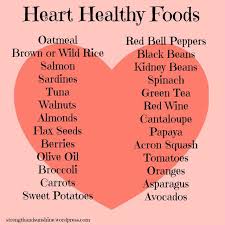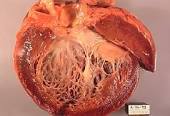
Diagnosed with Cancer? Your two greatest challenges are understanding cancer and understanding possible side effects from chemo and radiation. Knowledge is Power!
Learn about conventional, complementary, and integrative therapies.
Dealing with treatment side effects? Learn about evidence-based therapies to alleviate your symptoms.
Click the orange button to the right to learn more.
- You are here:
- Home »
- Blog »
- side effects ID and prevention »
- Cancer Therapy + Cardiotoxicity = Heart Damage, Death
Cancer Therapy + Cardiotoxicity = Heart Damage, Death

“Cardiotoxicity is a well-established complication of multiple chemotherapeutic agents. Cardiotoxicity related to chemotherapy can occur in many ways…”
Many FDA approved, safe and effective cancer therapies, both chemotherapy as well as immunotherapy, damage the heart. Much of this damage can cause death. The damage caused to the heart within days or weeks is just part of the problem.
I believe a much more serious health problem exists 15, 20, 30 years AFTER the therapy is administered. For example, I was diagnosed with chemotherapy-induced cardiomyopathy in 12/2010, fully 15 years after my high-dose chemo.
In order to manage chemotherapy-induced cardiomyopathy (CIMP), you must understand cardiotoxicity. This is what I have learned since my diagnosis of multiple myeloma in ’94 and my diagnosis of Chemotherapy-Induced Cardiomyopathy (CIMP) in 2010.
Once again, my experience is a result of conventional medicine steering me in the wrong direction. By this I mean that upon my diagnosis of CIMP, Dr. Plana prescribed metoprolol.
- No discussion of lifestyle.
- No discussion of exercise.
- No discussion of diet.
- No discussion of nutritional supplementation.
My point is that evidence-based, non-toxic heart therapies prescribed before, during and after cardiotoxic cancer regimens could very well eliminate much of this problem. These therapies have certainly helped me.
Please don’t misunderstand me. I am fine with cardiology’s reliance on prescription medicines for the treatment of CIMP. But I believe it is misleading, possibly dangerous to pretend to advocate the benefit of evidence-based, non-toxic therapies such as those above, yet rely on toxic therapies such as metoprolol to treat the heart damage caused by cancer therapies- both conventional chemotherapy as well as immunotherapies (see the study linked at the bottom of this post).
I didn’t react well to metoprolol. Therefore I stopped taking it and researched evidence-based, non-toxic therapies. Below is a basic list of what I do to manage my CIMP.
- CoQ10
- Omega-3 Fatty Acids
- Cocao
- Magnesium
- Frequent, moderate exercise
- Whole-body Hyperthermia
- heart-healthy nutrition
The results? Since my diagnosis in late 2010, my ejection-fraction has slowly improved from 35 to 45 to the low 50’ies. My weight has increased from 198- 208 (for the record, I work to keep my weight down. But despite my best efforts…)
Click now to learn more about death and the myeloma survivor
David Emerson
- Cancer Survivor
- Cancer Coach
- Director PeopleBeatingCancer
Recommended Reading:
- Oncologists Don’t Explain Blood Cancer Diagnosis, Therapies or Side Effects-
- Multiple Myeloma-More Chemo Is Not Better-
- Your Cancer Diagnosis- A How-To Guide
Monitoring for Chemotherapy-Related Cardiotoxicity in the Form of Left Ventricular Systolic Dysfunction: A Review of Current Recommendations
“Cardiotoxicity is a well-established complication of multiple cancer therapies, and the one of the most prominent effects that limits the use of these agents is in the form of left ventricular dysfunction, otherwise known as chemotherapy-induced cardiomyopathy (CIMP).
Because CIMP can worsen patient outcomes and interfere with a patient’s life-saving cancer treatments, it is important to implement a monitoring strategy for patients undergoing potentially cardiotoxic treatments…
Echocardiography remains the mainstay for imaging surveillance because of its safety profile and widespread availability, but the accuracy of cardiac magnetic resonance imaging (CMR) makes it an important modality when there are discrepancies in left ventricular ejection fraction assessment. Subclinical cardiotoxicity may be detected using laboratory biomarkers such as cardiac troponin and brain natriuretic peptide as well as myocardial deformation (strain) imaging by echocardiography or CMR…
CIMP, or cancer-therapeutics-related cardiac dysfunction, can range from mild asymptomatic myocardial injury manifested by troponin elevation or decrease in echocardiography-derived strain to overt heart failure with a decrease in the LV ejection fraction (LVEF)…
Multiple methods of imaging surveillance to detect CIMP exist (Fig 1). The ideal modality for the detection of CIMP should be
- safe,
- widely accessible,
- accurate,
- reproducible,
- and able to detect small and potentially subclinical changes in LV function is desirable.
Finding a way to stop chemotherapy from damaging the heart
“There could be an intervention on the horizon to help prevent heart damage caused by the common chemotherapy drug doxorubicin, new research suggests.
Scientists found that this chemo drug, used to treat many types of solid tumors and blood cancers, is able to enter heart cells by hitchhiking on a specific type of protein that functions as a transporter to move a drug from the blood into heart cells.
By introducing another anti-cancer drug in advance of the chemo, the researchers were able to block the transporter protein, effectively stopping the delivery of doxorubicin to those cardiac cells. This added drug, nilotinib, has been previously found to inhibit activation of other, related transport proteins…
The study is published today (Jan. 25, 2021) in Proceedings of the National Academy of Sciences.
Doxorubicin has long been known for its potential to increase patients’ risk for serious heart problems, with symptoms sometimes surfacing decades after chemo, but the mechanisms have been a mystery. The risk is dose-dependent – the more doses a patient receives, the higher the risk for cardiac dysfunction later in life that includes arrhythmia and a reduction in blood pumped with each contraction, a hallmark symptom of congestive heart failure…
Timely intervention critical for major cardiac events after immune checkpoint therapy
“Patients and prescribers should be more aware of the potential for major adverse cardiac events after immune checkpoint inhibitor-based therapy, according to retrospective study results presented at ASCO Annual Meeting…
“To the best of our knowledge, this is the first-ever pooled analysis of immune checkpoint inhibitor clinical trials evaluating major adverse cardiac events,” Abdul Rafeh Naqash, MD, assistant professor in the early phase division of Stephenson Cancer Center at University of Oklahoma, said during a presentation. “These findings have important management implications, as more and more patients are being treated with anti-pD-1/PD-l1 combinations…”
Myocarditis accounted for nearly half (45%; n = 18) of MACE, occurring a median two doses after immune checkpoint inhibitor administration. The majority (78%) of cases were grade 3 or higher.
Seventy-two percent of patients with myocarditis had been treated with anti-PD-1/PD-L1-based combination regimens, the most common of which included an anti-CTLA-4 inhibitor (92%)…
Nonmyocarditis MACE included dysrhythmias, cardiomyopathy, pericardial disorders, acute coronary syndrome and cardiac arrest…”



